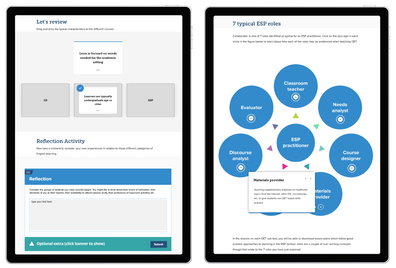Thinking of Converting a Live Training Programme into eLearning? Here’s What to Consider
- Joanna Smith

- Jan 7
- 3 min read
Live, instructor-led training (ILT) has long been the go-to for knowledge transfer, whether in-person or virtual. But it comes with its challenges—scheduling difficulties, high costs, and limited scalability, to name a few. eLearning can help address these issues by offering a more flexible and scalable way to deliver consistent, high-quality content.
eLearning shines when it comes to reducing costs, ensuring content is delivered the same way every time, and allowing learners to study on their own time. For training that requires reflection or discussion, a blended approach can work best—using eLearning for foundational knowledge and reserving ILT for activities that are better done in person.
Assessing if eLearning is Right for You
To determine whether eLearning is a good fit for your training, ask yourself these helpful questions:
Do you have a large, dispersed learner group?
If you’re spending big on travel and accommodation to train learners spread across multiple locations, eLearning could be your solution. Delivering training digitally ensures every learner gets the same content, and the cost savings can easily outweigh the initial investment in eLearning development.
Are facilitators repeating the same content?
Are your trainers covering the same material—like onboarding, compliance, or safety briefings—over and over again? Free them from this repetitive task by transitioning these topics to eLearning. Learners can go through the material at their own pace, and you can always add a quick session with a facilitator for reflection and Q&A.
Do your learners have diverse backgrounds?
In any training group, there are likely to be learners with varying levels of expertise. eLearning allows for customisation. Learners with no prior knowledge can access additional background materials, while those with more experience can skip ahead to the more complex concepts. This flexibility (which is not possible with ILT) helps everyone get what they need from the training.
Does your content require discussion?
For complex topics that spark discussion, eLearning can cover the foundational material, leaving live sessions for deeper conversations. This blended approach ensures learners come prepared for meaningful interactions during live sessions.
Do learners struggle with cognitive overload?
Long training sessions can be overwhelming. eLearning allows you to break the content into bite-sized modules, giving learners the flexibility to revisit material when it suits them. This also reduces the risk of cognitive overload and enhances retention.
Are your subject matter experts (SMEs) not skilled facilitators?
Your SMEs may know their content inside and out, but that doesn’t always make them the best trainers. Have them work with an instructional designer to capture their expertise in engaging eLearning materials, thus freeing them up from repetitive facilitation.
Tips to Enhance eLearning Engagement
Once you’ve decided to convert your live training to eLearning, it’s important to keep learners engaged. Here are some tips to make sure your content isn’t just informative but also fun and interactive:
Incorporate Videos
Short videos featuring instructors or SMEs help maintain your organisation’s personal touch. Demonstrations or explainer videos with helpful illustrations can also add clarity.

Interactive Activities
Interactive elements like quizzes, branching scenarios, drag-and-drop activities, and fill-in-the-blanks make learning more engaging. These activities also help reinforce key concepts and give learners an opportunity to demonstrate and apply their learning.
Use Storytelling
Storytelling is a powerful tool for making learning relatable and memorable. Create real-to-life scenarios where learners can see—and even trial—new concepts in action.

Ready to Transform Your Training?
If you’ve answered “yes” to any of the questions above, eLearning could be a fantastic option for your training programme. It can help save time, reduce costs, and allow learners to engage with material on their own terms.
If you need some support to transition your programmes into eLearning, we'd love to help!
Schedule a free chat with us today to discuss.










